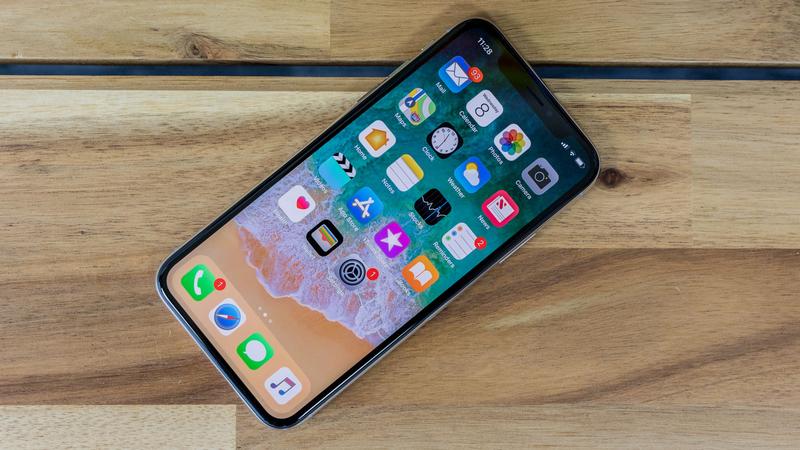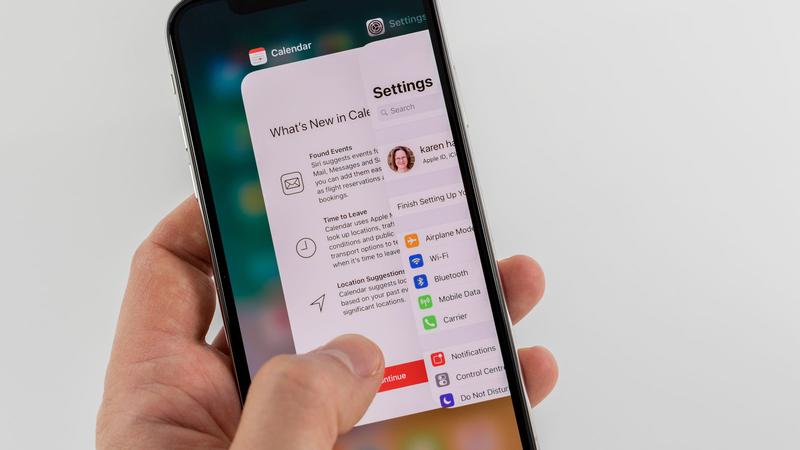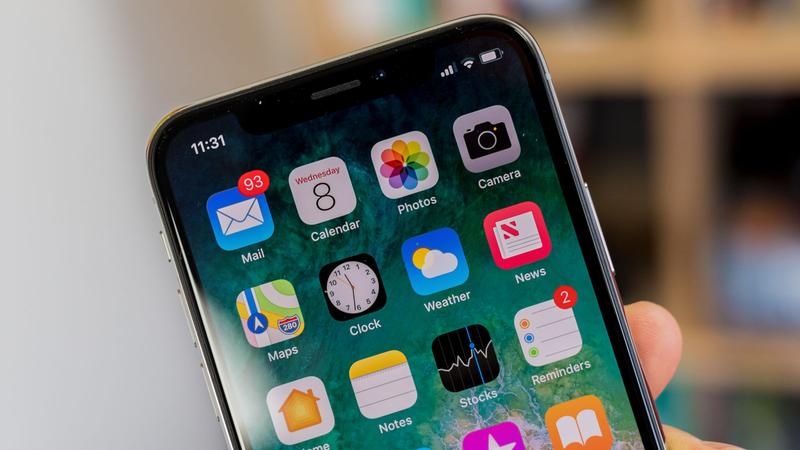Expert's Rating
Our Verdict
The iPhone X comes with a number of quirks, but there’s nothing you can’t simply get used to and we’re sure Apple will bring fixes and improvements to iron things out. When compared with the other new iPhones, the X wins hands-down despite only having a few exclusive features. And while you can get Android phones on the same premium level at a lower price, that doesn’t stop the iPhone X being an awesome device in all areas. The big question here is whether you can or should spend the undoubtedly tricky price tag. We can only answer the latter and luckily for Apple, the iPhone X is so good that why shouldn’t you spend this amount on the piece of technology you use the most?
The iPhone’s tenth anniversary has been celebrated with a phone that finally marks a big change for the iconic device. But is Apple still playing catch-up with Android rivals? And is the iPhone X too expensive?
Bezel-free displays are all the rage and a decent flagship smartphone needs to have dual-cameras, waterproofing and wireless charging. The iPhone X has them all, but has Apple repeated the success of the original iPhone and be the benchmark once again?
We’ll answer all these questions, and more, with our in-depth iPhone X review.
Price
As you may already be aware, the iPhone X has quite the price tag, starting at a whopping £999 should you be buying it outright. You can buy one on Apple’s website.
You’ll need to be happy with 64GB of storage, otherwise a jump to an eye-watering £1,149 will bag you the 256GB model.
The question is whether you should or can spend the extra compared to the other iPhones and rivals.
The iPhone X is £200 more than the 8 Plus and £300 more than the iPhone 8. Only you will know if you can afford the jump but with the 8 models being so similar to predecessors, the iPhone X is the much more exciting upgrade.
As usual, Apple has some stiff competition from some Android flagships like the Samsung Galaxy Note 8, LG G6, Google Pixel 2 XL and more. It’s unsurprising that they’re all cheaper with the most expensive, the Note 8, still saving you £130 in comparison. Whether you’re happy with Android is another matter.
The iPhone X isn’t good value for money, not even close, but it’s certainly our favourite iPhone you can get at the moment.
The new phones are already popping up on eBay, but at significantly more than retail value. Also try mobile operators – we’ve rounded up some of the best deals.

Design and build quality
Undoubtedly the biggest attraction of the iPhone X is the screen. It’s nothing new in the wider market but this is the first time that Apple has offered a larger display on a phone that isn’t simply huge.
The new display means you get a bigger screen than the iPhone 8 Plus in a much smaller handset. It’s actually not that much bigger than the regular iPhone 8. With iPhone design effectively unchanged for a number of years and devices, the iPhone X suddenly looks dramatically new, refreshing and even futuristic.
With such as drastic change in the design, there are a numbers of elements about the iPhone X that are different to the normal formula.
Despite various rumours, Apple did not managed to embed the fingerprint scanner into the screen. Nor did it move the sensor to the back of the phone like a number of rivals. So you’ll need to use Face ID instead which we’ll explain in detail below.

With no Touch ID home button, the iPhone is very different to use compared to other iPhones. You’ll end up using the side button a lot more, for things like summoning Siri, and also learning all the new gestures which we’ll also explain below.
In general, the iPhone X is the usual iPhone shape and is only available in two colours – Space Grey and Silver. With no bezels at the front this dictates the colour of the back and frame and we much prefer the former as the Silver option has a somewhat dull grey back and garishly chromed edge which looks cheap.
The iPhone X is fairly heavy at 174g but that’s still a decent chunk less than the 8 Plus. The X is also pretty thick in comparison at 7.7mm. We’re not too fussed about either apart from the lack of a headphone jack despite the space for it.
It’s reassuringly weighted and that’s largely due to the new glass rear panel and stainless steel frame. The former is a sort of homage to earlier iPhones but serves a purpose beyond looks. You can use wireless charging on the iPhone X but be aware that this is also available on the 8 models. (Read more about Apple’s AirPower wireless charger, which is coming soon.)

Wireless charging is a very welcome addition but a glass rear cover also introduces other issues. For starters it’s very slippery, both in the hand and when you put it down, and can also shatter despite Apple saying it’s the toughest glass on an iPhone.
Apple Care+ costs £199 for the iPhone X so all of these things mean you’ll probably want a decent case, especially considering how much you’ve spent on the device.
Another change in design which might seem subtle is the camera module moving to a vertical orientation. That’s fine, but it sticks out more than others and means that the iPhone X wobbles on a flat surface like a table with uneven legs.
The iPhone X is IP67 waterproof so it can be fully dunked in fresh water – up to 1m for 30 minutes. Again, this is something available on the iPhone 8 and 8 Plus if it affects your decision between this year’s offering.
Specs and features
Unlike the iPhone 8 and 8 Plus, there’s a lot of change and new things in the iPhone X. It’s Apple’s most radical device for quite some time and it’s not just that new screen, either. Many things will take some getting used to, especially for long-time iPhone users.
Screen
In case you haven’t noticed, the iPhone X has a somewhat insane new screen. Apple calls it the Super Retina Display.
It’s 5.8in matching rivals like the Galaxy S8 and although it doesn’t have curved edges like Samsung, it’s still gorgeous. The 1125×2436 resolution makes it the crispest iPhone yet at 401ppi and it looks like a glossy magazine a lot of time.

Although the phone is smaller than the 8 Plus the big screen makes it harder to use in various ways regardless. Apps at the top of the screen, for example, are harder to reach so on the whole, the iPhone X is a two-handed device.
Not only is it bezel-free, but it’s Apple’s first using OLED technology. This means things like contrast are vastly improved and colours are far more vibrant, mainly compared to the LCDs in other iPhones.
The display is also very bright when you need it to be and has Apple’s True Tone technology to automatically adjust colour temperature.
It’s worth pointing out that the screen’s unusual aspect ratio of 2.17:1 means that not all apps display full-screen, although this will become less of an issue over time. Apple like National Rail are shown with black bars at the top and bottom.
The so called ‘notch’ is a key part of the screen and is there to house things like the earpiece and front facing camera. Instead of having a bezel across the width of the phone, Apple has wrapped it around.
We haven’t found the notch the annoying eye-sore we feared it might be, but it is frankly horrible when watching videos or playing games in full-screen. Luckily you can choose not to let a video take up the entire display.
The other issue is that two small areas don’t have space for all the notifications and information you’re used to. Gone are icons for Bluetooth, battery percentage, do not disturb and more – with the latter being quite the bugbear.

Gestures
As mentioned earlier, the lack of a home button means you’ll need to learn and adjust to a new way of interacting with iOS on the iPhone X.
You’re probably used to using the home button to wake the screen and while you can use the side button on the X, it’s far easier to just tap the screen. Once unlocked – see Face ID below – things get more complicated.
To quit an app, you need to swipe up from the bottom of the screen and pause half way to bring up the App Switcher. A clever gesture means simply swiping left or right at the bottom of the screen will switch between apps, but the order changes after a few seconds which is confusing.
Since the swipe gesture returns to the homescreen, you can’t fling apps upwards to close them full. Instead, you’ll need to long press in the App Switcher and use the minus button.
That also means that Control Centre has been moved so this is now accessible from the right shoulder of the screen where the battery indicator is. The left shoulder is for the notification pane and it makes sense, but the shoulders are very hard to reach one-handed.
When in landscape, only the very far right works for Control Centre which is odd – a 50/50 split would make more sense.
It’s all pretty alien, even for a non-iPhone user, but on the whole it only takes a few days to get used to.

Face ID
Arguably the biggest change for iPhone users is having to switch from using a fingerprint to log in to Face ID. As the name suggests, your face is scanned by the TrueDepth camera at the front to make sure it’s you using the phone.
It’s easy to set up and we’re also impressed by how well it works. It successfully scans the vast majority of the time and in a wide range of conditions. You can look down at the phone sitting on your desk and even use Face ID in surprisingly low light conditions thanks to infrared.
Apple says Face ID will learn more about you over time and even keep track of changes like you growing a beard. We can’t comment on that yet but what we can say is that it even works if you’re wearing things like sunglasses and hats.
What you might not like so much is using Face ID in public, especially as you need to use it for Apple Pay transactions.
It might be a small thing but it’s also annoying that once Face ID has done it’s thing, you have to swipe up from the very bottom of the screen to move from the lockscreen to homescreen rather than just anywhere.

If you don’t like Face ID for whatever reason, you can always use an alternative security method. You’ll need to set a backup passcode anyway. But aside from the Apple Pay issue, we think most people will get used to it.
Apple says its 20 times more secure than Touch ID and although it has reportedly been fooled, we’d be surprised if some mugger happens to have a sophisticated mask or your face to hand.
Animoji
Oddly, one of the selling points for the iPhone X – especially setting it apart from the 8 models – is something of a gimmick.
Using the TrueDepth face tracking, the iPhone X can mirror your movement and expression on a choice of 12 emojis including various animals, a robot, a poo and an alien. It doesn’t have its own app, but is instead accessible from Messages.
The tracking, if the lighting is ok, is remarkable and it’s pretty fun to play with but it’s hardly a reason to opt for the X over the 8 or even other phones. You can record the movement with your voice and send it to someone. Weirdly you must send it via Messages before it can be saved and used elsewhere.

Processor and performance
As usual, a new generation of iPhone means a new processor, and it’s the A11 Bionic which is found in all of this year’s iPhones. The Bionic bit is just marketing, but what’s important is a move to six cores rather than four – two for performance and four for efficiency. The X has 3GB of RAM, which matches the 8 Plus.
The latter are up to 70 percent faster than the A10 Fusion’s low-power cores, and the former are up to 25 percent quicker, says Apple.
It’s also the first one with Apple’s own GPU which is tri-core and 30 percent better than the A10. Across all the benchmarks, the iPhone X performs extremely well. Particularly in Geekbench 4 where it even beats some Intel Core laptops.
Despite the insane raw power of the A11, we’ve still noticed some issues with a few apps. Namely scrolling in Twitter – letting feed move without touching the screen – is quite jerky. We’re not sure where the problem lies but it shows that a benchmark figure only means so much.
We also found a graphical performance dip when the iPhone X battery dropped below 10 percent. After this point it appeared far less capable of the navigation animations used in iOS.

Cameras
The camera setup on the iPhone X is much like the iPhone 8 Plus with dual rear cameras, albeit in a vertical array. The second camera working as a 2x telephoto when compared to the main lens.
However, this second camera now gets OIS like the main sensor – exclusive to the X, although not the wider market – which means sharper photos and more stable videos. It also has a larger f/2.4 aperture, which lets in 30 percent more light: another boon when light levels are low.
Video has also been improved as the rear cameras can now record 4K at 60fps (twice that of the iPhone 7), and 1080p slow motion capture at 240fps, again double the frame rate. These are all matched on the iPhone 8 models.

At the front is the biggest change. The notch at the top houses a 7Mp TrueDepth camera. It works in tandem with a dot projector and IR camera to create a depth map of your face. If it’s dark, a special IR LED lights up your face so the system can still work.
Both front and rear cameras support a new feature called Portrait Lighting. This adjusts the tone mapping on faces to simulate different kinds of studio lighting. From left to right below you can see the various effects: Natural, Studio, Contour, Stage, Stage mono.
Plus, you can now use the front camera with the Depth Effect mode for selfies with a blurry background.

Gladly, considering the price, the iPhone X is one of the best phones you can buy for photography and video. It’s up there with the Pixel 2 devices offering an excellent set of features and all-round performance.
The iPhone X is very capable at all kinds of challenges with good exposure, detail, colour, white balance and noise levels. There’s very little to complain about with minor issues such as a slightly slow autofocus sometimes and Portrait Lighting not always suiting the situation. In general, you’ll be getting shots you might not believe are possible with a phone.
It’s also brilliant for those wanting to shoot video, we just wish Apple put more of the settings in the camera app rather than hidden away in the phone’s settings.
See our gallery of iPhone X test photos below:
Battery life and wireless charging
Apple says the iPhone X will provide an extra two hours battery life compared to the iPhone 7 – the same is true for the 8 and 8 Plus. We’ve found the iPhone X battery life to be very good, easily lasting a day of regular usage.
We’re disappointed, though, that although the iPhone X supports fast charging, Apple doesn’t supply the necessary kit in the box despite how much you’re shelling out. Instead, it will cost you £74 to get the right 29W adapter and cable.
The supplied charger only gives the iPhone X 15 percent charge in 30 minutes, but a fast charger will get you to 50, according to Apple.
Wireless charging is finally a thing on an iPhone, but not exclusively to the X. The glass back enables this technology and with any Qi compatible pad or stand – not a proprietary system – you simply place the phone down and it will start charging.
It’s handy, especially if you get a wireless charger for your desk and/or bedside table – or even when our and about in various coffee shops etc. However, bear in mind that it will take around three hours or more to charge the iPhone X fully with this method.

Software
There’s not a great deal to cover in terms of software that we haven’t said already. We’ve given new features like Face ID, Animoji and the new iPhone X gestures their own sections above so you can read in detail.
Also read the screen section to get to grips with what iOS is like to use on the radically different display with its notch and other quirks. The only thing we didn’t mention already is that the system shows the keyboard slightly off the bottom of the screen for comfort.
Overall, iOS looks great on the screen and is also slick in general use – see performance for a couple of caveats. There are a number of things users – previously iPhone or not – will have to take time to learn but it’s nothing serious.
Many of these issues, we hope, will be resolved over time with software updates. And speaking of those, here are the latest iOS 12 rumours.

Related stories for further reading
- Best phone deals
- Best SIM-only deals
- Best phone network
- All smartphone reviews
- Best smartphones
- How we test smartphones
- Best new phones coming soon
Specs
Apple iPhone X: Specs
- iOS 11
- 5.85in, 2436×1125 OLED panel, True Tone & Wide Colour display, 458ppi
- A11 Bionic CPU
- 64/256GB storage
- Main camera: 12Mp, f/1.8 with OIS + 12Mp, f/2.4 with OIS
- Selfie camera: 7Mp, f/2.2
- Touch ID, 3D Touch
- 802.11ac dual-band Wi-Fi with MIMO
- Bluetooth 5.0
- 4G LTE
- Nano-SIM
- GPS
- NFC (Apple Pay only)
- Lightning
- Wireless charging (works with Qi chargers)
- 70.9 x 143.6 x 7.7mm 174g IP67 water resistance




